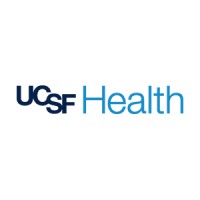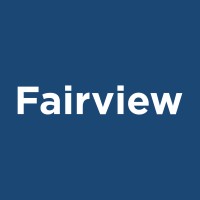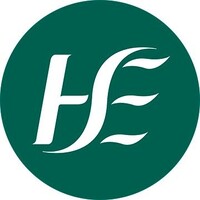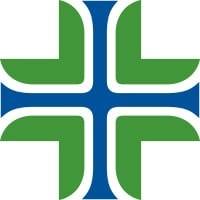Company Details
ucsfhealth
11,229
112,083
62
ucsfhealth.org
3805
UCS_6354324
Completed

UCSF Health Company CyberSecurity Posture
ucsfhealth.orgUCSF Health is an integrated health care network encompassing several entities, including UCSF Medical Center, one of the nation’s top 10 hospitals according to U.S. News & World Report, and UCSF Benioff Children’s Hospitals, with campuses in Oakland and San Francisco. We are recognized throughout the world for our innovative patient care, advanced technology and pioneering research. For more than a century, we have offered the highest quality medical treatment. Today, our expertise covers virtually all specialties, from cancer to women's health. In addition, the compassionate care provided by our doctors, nurses and other staff is a key to our success. Our services generate about 1.1 million patient visits to our clinics a year and $3.2 billion in annual revenue. We have 12,000 employees and dozens of locations throughout San Francisco as well as outreach clinics throughout Northern California and beyond.
Company Details
ucsfhealth
11,229
112,083
62
ucsfhealth.org
3805
UCS_6354324
Completed
Between 700 and 749

 UCSF Health Global Score (TPRM)
UCSF Health Global Score (TPRM)XXXX

Description: The California Office of the Attorney General reported a data breach involving UCSF Medical Center on October 2, 2013. The breach occurred on September 9, 2013, due to the theft of an unencrypted laptop from a locked vehicle, potentially affecting health information of individuals, including names and medical record numbers.
Description: The California Office of the Attorney General reported a data breach involving the University of California San Francisco (UCSF) on November 21, 2013. The breach occurred on September 25, 2013, when an unencrypted personal laptop containing identifiable health information was stolen from a physician's locked vehicle. The stolen laptop contained sensitive health information, which could potentially compromise the privacy and security of the affected individuals.
Description: The University of California, San Francisco (UCSF) experienced a data breach on **February 9, 2023**, disclosed on **April 26, 2023**, due to a **phishing attack** targeting UCSF email accounts. The breach exposed sensitive personal information of individuals, including **First Name, Last Name, Date of Birth, Medical Record Number (MRN), and Date of Service**. The exact number of affected individuals remains undetermined, but the compromised data poses risks of identity theft, medical fraud, or targeted scams. The attack exploited human vulnerability through phishing, leading to unauthorized access to employee email accounts, which likely contained or facilitated access to patient records. While no ransomware was involved, the exposure of **protected health information (PHI)**—particularly MRNs and service dates—heightens concerns over compliance violations (e.g., HIPAA) and potential misuse of medical data. The breach underscores the persistent threat of social engineering attacks in healthcare institutions, where employee credentials serve as gateways to highly sensitive systems.
Description: The California Office of the Attorney General reported a data breach involving the University of California San Francisco (UCSF) on November 13, 2020. The breach occurred on June 1, 2020, due to a cybersecurity attack that resulted in unauthorized access to personal information, including names and social security numbers, affecting an unspecified number of individuals. UCSF paid the attacker to recover encrypted data and has offered credit monitoring services to impacted individuals.


No incidents recorded for UCSF Health in 2025.
No incidents recorded for UCSF Health in 2025.
No incidents recorded for UCSF Health in 2025.
UCSF Health cyber incidents detection timeline including parent company and subsidiaries

UCSF Health is an integrated health care network encompassing several entities, including UCSF Medical Center, one of the nation’s top 10 hospitals according to U.S. News & World Report, and UCSF Benioff Children’s Hospitals, with campuses in Oakland and San Francisco. We are recognized throughout the world for our innovative patient care, advanced technology and pioneering research. For more than a century, we have offered the highest quality medical treatment. Today, our expertise covers virtually all specialties, from cancer to women's health. In addition, the compassionate care provided by our doctors, nurses and other staff is a key to our success. Our services generate about 1.1 million patient visits to our clinics a year and $3.2 billion in annual revenue. We have 12,000 employees and dozens of locations throughout San Francisco as well as outreach clinics throughout Northern California and beyond.


Fairview Health Services is Minnesota’s choice for healthcare. We’re an industry-leading, award-winning, nonprofit offering a full network of healthcare services. Our broad network is designed to be ready for our patients’ every need, while delivering quality care with compassion. Our care portfoli

LUX MED - leader and trustworthy expert We care for the health of the patients professionally and with engagement, we have been developing our business for over 20 years. Today we are the leader and expert on the private healthcare market. We take under our care both individual patients and corpo
Northwestern Medicine is the collaboration between Northwestern Memorial HealthCare and Northwestern University Feinberg School of Medicine around a strategic vision to transform the future of health care. It encompasses the research, teaching, and patient care activities of the academic medical cen

Formed in 1994, Brown University Health (Formerly Lifespan) is a not-for-profit health system based in Providence, RI comprising three teaching hospitals of The Warren Alpert Medical School of Brown University: Rhode Island Hospital and its Hasbro Children's; The Miriam Hospital; and Bradley Hospita

Our purpose is to provide safe, high quality health and personal social services to the population of Ireland. Our vision is a healthier Ireland with a high quality health service valued by all. Our Workforce The health service is the largest employer in the state with over 110,000 whole time equ

Every day, 119,000 compassionate caregivers serve patients and communities through Providence St. Joseph Health, a national, Catholic, not-for-profit health system, driven by a belief that health is a human right. Rooted in the founding missions of the Sisters of Providence and the Sisters of St.

Stanford Health Care, with multiple facilities throughout the Bay Area, is internationally renowned for leading edge and coordinated care in cancer care, neurosciences, cardiovascular medicine, surgery, organ transplant, medicine specialties, and primary care. Throughout its history, Stanford has be

OSF HealthCare is an integrated health system founded by The Sisters of the Third Order of St. Francis. Headquartered in Peoria, Illinois, OSF HealthCare has 17 hospitals – 11 acute care, five critical access and one continuing care – with 2,305 licensed beds throughout Illinois and Michigan. OSF e

With us by your side, there's no stopping you. It's why we're creating a new kind of healthcare at Baylor Scott & White. And we're just getting started. As the largest not-for-profit health system in the state of Texas, Baylor Scott & White promotes the health and well-being of every individual, fa
.png)
It can be very overwhelming scrolling through job board after job board in search of a position that fits your wants and needs.
University of California San Francisco (UCSF) Health is set to strengthen two community hospitals in San Francisco, US, as part of a $430m,...
Learn about a new Series C funding round in which an AI clinical documentation company raised $243 million.
This year's award winners showcase the diversity and excellence of the UC system, spanning multiple locations, technical disciplines and real-world challenges.
UCSF Health said it has laid off an estimated 200 employees in an effort to combat rising operating costs and lower reimbursements rates.
The joint research program will pair UCSF's advanced clinical and research teams with GE HealthCare's technical and engineering expertise to develop solutions.
The event celebrated the efforts of 163 medical students who completed a year and a half of work on quality improvement at UCSF-affiliated clinical sites.
UCSF research shows a higher pregnancy risk post-tubal ligation, urging women to consider more effective contraceptives, such as implants or intrauterine...
UCSF Health has now acquired two San Francisco facilities from Dignity Health. The completion of the deal follows an agreement with the California attorney...

Explore insights on cybersecurity incidents, risk posture, and Rankiteo's assessments.
The official website of UCSF Health is http://www.ucsfhealth.org.
According to Rankiteo, UCSF Health’s AI-generated cybersecurity score is 718, reflecting their Moderate security posture.
According to Rankiteo, UCSF Health currently holds 0 security badges, indicating that no recognized compliance certifications are currently verified for the organization.
According to Rankiteo, UCSF Health is not certified under SOC 2 Type 1.
According to Rankiteo, UCSF Health does not hold a SOC 2 Type 2 certification.
According to Rankiteo, UCSF Health is not listed as GDPR compliant.
According to Rankiteo, UCSF Health does not currently maintain PCI DSS compliance.
According to Rankiteo, UCSF Health is not compliant with HIPAA regulations.
According to Rankiteo,UCSF Health is not certified under ISO 27001, indicating the absence of a formally recognized information security management framework.
UCSF Health operates primarily in the Hospitals and Health Care industry.
UCSF Health employs approximately 11,229 people worldwide.
UCSF Health presently has no subsidiaries across any sectors.
UCSF Health’s official LinkedIn profile has approximately 112,083 followers.
UCSF Health is classified under the NAICS code 62, which corresponds to Health Care and Social Assistance.
No, UCSF Health does not have a profile on Crunchbase.
Yes, UCSF Health maintains an official LinkedIn profile, which is actively utilized for branding and talent engagement, which can be accessed here: https://www.linkedin.com/company/ucsfhealth.
As of November 27, 2025, Rankiteo reports that UCSF Health has experienced 4 cybersecurity incidents.
UCSF Health has an estimated 29,983 peer or competitor companies worldwide.
Incident Types: The types of cybersecurity incidents that have occurred include Ransomware and Breach.
Detection and Response: The company detects and responds to cybersecurity incidents through an communication strategy with public disclosure via california office of the attorney general..
Title: UCSF Medical Center Data Breach
Description: The California Office of the Attorney General reported a data breach involving UCSF Medical Center on October 2, 2013. The breach occurred on September 9, 2013, due to the theft of an unencrypted laptop from a locked vehicle, potentially affecting health information of individuals, including names and medical record numbers.
Date Detected: 2013-09-09
Date Publicly Disclosed: 2013-10-02
Type: Data Breach
Attack Vector: Theft of Unencrypted Laptop
Vulnerability Exploited: Physical Security
Title: Data Breach at University of California San Francisco
Description: The California Office of the Attorney General reported a data breach involving the University of California San Francisco (UCSF) on November 13, 2020. The breach occurred on June 1, 2020, due to a cybersecurity attack that resulted in unauthorized access to personal information, including names and social security numbers, affecting an unspecified number of individuals. UCSF paid the attacker to recover encrypted data and has offered credit monitoring services to impacted individuals.
Date Detected: 2020-06-01
Date Publicly Disclosed: 2020-11-13
Type: Data Breach
Title: Data Breach at University of California San Francisco (UCSF)
Description: A data breach occurred when an unencrypted personal laptop containing identifiable health information was stolen from a physician's locked vehicle.
Date Detected: 2013-09-25
Date Publicly Disclosed: 2013-11-21
Type: Data Breach
Attack Vector: Physical Theft
Vulnerability Exploited: Unencrypted Data
Threat Actor: Unknown
Motivation: Unknown
Title: Data Breach at University of California, San Francisco (UCSF) via Phishing Attack
Description: The California Office of the Attorney General reported a data breach involving the University of California, San Francisco (UCSF) on April 26, 2023. The breach occurred on February 9, 2023, due to a phishing attack that compromised some UCSF email accounts, potentially exposing individuals' First Name, Last Name, Date of Birth, MRN (Medical Record Number), and Date of Service. The number of individuals affected is currently unknown.
Date Detected: 2023-02-09
Date Publicly Disclosed: 2023-04-26
Type: Data Breach
Attack Vector: Phishing
Common Attack Types: The most common types of attacks the company has faced is Breach.
Identification of Attack Vectors: The company identifies the attack vectors used in incidents through Phishing (compromised email accounts).

Data Compromised: Names, Medical record numbers

Data Compromised: Names, Social security numbers

Data Compromised: Identifiable Health Information
Systems Affected: Personal Laptop

Data Compromised: First name, Last name, Date of birth, Mrn, Date of service
Systems Affected: Email Accounts
Identity Theft Risk: Potential (PII exposed)
Commonly Compromised Data Types: The types of data most commonly compromised in incidents are Names, Medical Record Numbers, , Names, Social Security Numbers, , Identifiable Health Information, Personally Identifiable Information (Pii), Protected Health Information (Phi) and .

Entity Name: UCSF Medical Center
Entity Type: Healthcare
Industry: Healthcare
Location: California

Entity Name: University of California San Francisco
Entity Type: Educational Institution
Industry: Education
Location: San Francisco, California

Entity Name: University of California San Francisco (UCSF)
Entity Type: Educational Institution
Industry: Healthcare
Location: San Francisco, California

Entity Name: University of California, San Francisco (UCSF)
Entity Type: Educational Institution / Healthcare Provider
Industry: Education, Healthcare
Location: San Francisco, California, USA
Customers Affected: Unknown

Communication Strategy: Public disclosure via California Office of the Attorney General

Type of Data Compromised: Names, Medical record numbers
Sensitivity of Data: High
Data Encryption: No
Personally Identifiable Information: Yes

Type of Data Compromised: Names, Social security numbers

Type of Data Compromised: Identifiable Health Information
Sensitivity of Data: High
Data Encryption: No
Personally Identifiable Information: Yes

Type of Data Compromised: Personally identifiable information (pii), Protected health information (phi)
Number of Records Exposed: Unknown
Sensitivity of Data: High (includes MRN and PHI)
Personally Identifiable Information: First NameLast NameDate of BirthMRNDate of Service

Data Encryption: True

Regulations Violated: Potentially HIPAA (Health Insurance Portability and Accountability Act), California Consumer Privacy Act (CCPA),
Regulatory Notifications: California Office of the Attorney General

Source: California Office of the Attorney General
Date Accessed: 2013-10-02

Source: California Office of the Attorney General
Date Accessed: 2020-11-13

Source: California Office of the Attorney General

Source: California Office of the Attorney General
Date Accessed: 2023-04-26
Additional Resources: Stakeholders can find additional resources on cybersecurity best practices at and Source: California Office of the Attorney GeneralDate Accessed: 2013-10-02, and Source: California Office of the Attorney GeneralDate Accessed: 2020-11-13, and Source: California Office of the Attorney General, and Source: California Office of the Attorney GeneralDate Accessed: 2023-04-26.
Communication of Investigation Status: The company communicates the status of incident investigations to stakeholders through Public disclosure via California Office of the Attorney General.

Entry Point: Phishing (compromised email accounts)
Ransom Payment History: The company has Paid ransoms in the past.
Last Attacking Group: The attacking group in the last incident was an Unknown.
Most Recent Incident Detected: The most recent incident detected was on 2013-09-09.
Most Recent Incident Publicly Disclosed: The most recent incident publicly disclosed was on 2023-04-26.
Most Significant Data Compromised: The most significant data compromised in an incident were Names, Medical Record Numbers, , names, social security numbers, , Identifiable Health Information, First Name, Last Name, Date of Birth, MRN, Date of Service and .
Most Significant System Affected: The most significant system affected in an incident was Email Accounts.
Most Sensitive Data Compromised: The most sensitive data compromised in a breach were Last Name, Names, Date of Birth, social security numbers, Medical Record Numbers, MRN, Identifiable Health Information, names, First Name and Date of Service.
Number of Records Exposed in Most Significant Breach: The number of records exposed in the most significant breach was 0.
Highest Ransom Paid: The highest ransom paid in a ransomware incident was True.
Most Recent Source: The most recent source of information about an incident is California Office of the Attorney General.
Most Recent Entry Point: The most recent entry point used by an initial access broker was an Phishing (compromised email accounts).
.png)
Angular is a development platform for building mobile and desktop web applications using TypeScript/JavaScript and other languages. Prior to versions 19.2.16, 20.3.14, and 21.0.1, there is a XSRF token leakage via protocol-relative URLs in angular HTTP clients. The vulnerability is a Credential Leak by App Logic that leads to the unauthorized disclosure of the Cross-Site Request Forgery (XSRF) token to an attacker-controlled domain. Angular's HttpClient has a built-in XSRF protection mechanism that works by checking if a request URL starts with a protocol (http:// or https://) to determine if it is cross-origin. If the URL starts with protocol-relative URL (//), it is incorrectly treated as a same-origin request, and the XSRF token is automatically added to the X-XSRF-TOKEN header. This issue has been patched in versions 19.2.16, 20.3.14, and 21.0.1. A workaround for this issue involves avoiding using protocol-relative URLs (URLs starting with //) in HttpClient requests. All backend communication URLs should be hardcoded as relative paths (starting with a single /) or fully qualified, trusted absolute URLs.
Forge (also called `node-forge`) is a native implementation of Transport Layer Security in JavaScript. An Uncontrolled Recursion vulnerability in node-forge versions 1.3.1 and below enables remote, unauthenticated attackers to craft deep ASN.1 structures that trigger unbounded recursive parsing. This leads to a Denial-of-Service (DoS) via stack exhaustion when parsing untrusted DER inputs. This issue has been patched in version 1.3.2.
Forge (also called `node-forge`) is a native implementation of Transport Layer Security in JavaScript. An Integer Overflow vulnerability in node-forge versions 1.3.1 and below enables remote, unauthenticated attackers to craft ASN.1 structures containing OIDs with oversized arcs. These arcs may be decoded as smaller, trusted OIDs due to 32-bit bitwise truncation, enabling the bypass of downstream OID-based security decisions. This issue has been patched in version 1.3.2.
Suricata is a network IDS, IPS and NSM engine developed by the OISF (Open Information Security Foundation) and the Suricata community. Prior to versions 7.0.13 and 8.0.2, working with large buffers in Lua scripts can lead to a stack overflow. Users of Lua rules and output scripts may be affected when working with large buffers. This includes a rule passing a large buffer to a Lua script. This issue has been patched in versions 7.0.13 and 8.0.2. A workaround for this issue involves disabling Lua rules and output scripts, or making sure limits, such as stream.depth.reassembly and HTTP response body limits (response-body-limit), are set to less than half the stack size.
Suricata is a network IDS, IPS and NSM engine developed by the OISF (Open Information Security Foundation) and the Suricata community. In versions from 8.0.0 to before 8.0.2, a NULL dereference can occur when the entropy keyword is used in conjunction with base64_data. This issue has been patched in version 8.0.2. A workaround involves disabling rules that use entropy in conjunction with base64_data.

Get company history
















Every week, Rankiteo analyzes billions of signals to give organizations a sharper, faster view of emerging risks. With deeper, more actionable intelligence at their fingertips, security teams can outpace threat actors, respond instantly to Zero-Day attacks, and dramatically shrink their risk exposure window.
Identify exposed access points, detect misconfigured SSL certificates, and uncover vulnerabilities across the network infrastructure.
Gain visibility into the software components used within an organization to detect vulnerabilities, manage risk, and ensure supply chain security.
Monitor and manage all IT assets and their configurations to ensure accurate, real-time visibility across the company's technology environment.
Leverage real-time insights on active threats, malware campaigns, and emerging vulnerabilities to proactively defend against evolving cyberattacks.




